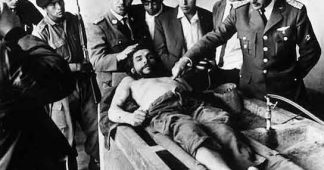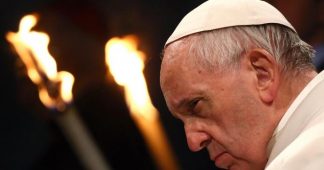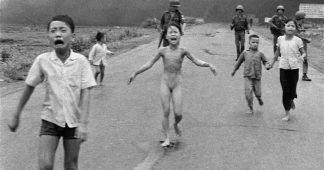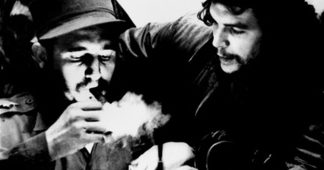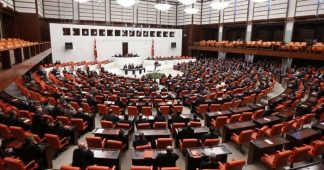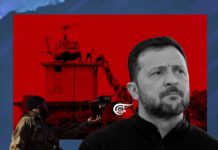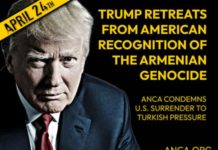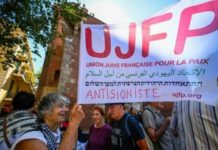An Interview with Dr. Jorge González, former Director of the Cuban Forensic Institute in Havana.
Fifty years ago ‘Che’ Guevara was captured and brutally executed in the jungles of Bolivia by Bolivian recruits who were trained, equipped and guided by U.S. Green Beret and CIA operatives. Almost immediately afterwards Che was drafted into the canon of post-Catholic sainthood. The Bolivian army’s official photograph of Che, taken after he was executed— his head raised, eyes open, a faint smile on his lips — became an icon of saintly rebellion. Che’s death not only gave meaning to his life, but to multitudes of ordinary people around the world. His Christ-like image had immediate resonance among the poor and oppressed of Latin America who believed that their popular saint, ‘Querido Che’ would some day rise again. What was less anticipated was the impact of his death on generations of young people around the world.
The spiritual and political afterlife of Che, like the afterlife of Jesus of Nazareth, begins with their brutal torture and deaths at the hands of sadistic soldiers, colonizing forces (Rome and the US CIA) and local collaborators. Both men faced their capture and deaths with equanimity and graceful acceptance of their fate and left this world with words of consolation and , yes, of love. Both men were given opportunities to surrender and save themselves, but both acquiesced to their fate, remained true to their beliefs, and faced their executioners with words of comfort and of love. Che: “I know you are here to kill me. Shoot, you are only going to kill a man… please, tell my wife to remarry and try to be happy.” Jesus: “Father forgive them for they know not what they do”.
The gospel narratives of described a man whose death shook the earth and left his own executioners fear and regret that they had killed a son of God. Jorge Castaneda’s biography, Compañero: The Life and Death of Che Guevara (Knopf) and Michael Casey’s Che’s Afterlife: the Legacy of an Image refer to an iconic photo of the dead Che that ignited a fierce political and spiritual loyalty to the memory of the revolutionary hero. Freddy Alborta’s photo of Che’s lacerated body, laid out on a concrete slab surrounded by gloating Bolivian soldiers and CIA operatives, one callously pointing to a mortal wound, became a global symbol of a spiritual socialist revolution. Che’s restful body, his gentle eyes and peaceful countenance radiated forgiveness and love. John Berger noted the resemblance of the photo to Andrea Mantegna’s Lamentation over the Dead Christ. (John Berger, 1975). Alborta’s photo, sometimes referred to as “The Passion of the Che” ensured that the Argentine revolutionary would live on forever as a symbol of the spiritual socialist cause. Displayed at meetings or rallies the image is often accompanied by cries of “Che está Presente”- Che is here with us, a real existential presence’ similar to the “Real Presence” of Jesus, here, present in our own bodies, minds and spirits.

Photo by Freddy Alberto.
It took twenty years before a Cuban forensic expedition went to the small community of La Higuera in Bolivia to locate, exhume and repatriate Che’s remains and those of his colleagues in 1997. The Cuban expedition was led by Dr. Jorge González, then Director of the Cuban Forensic Institute in Havana, and assisted by key members of the Argentine Forensic Team (Equipo Argentino de Antropología Forense, or “EAAF”).
In January 2000 I met and interviewed Dr. González following a lecture I gave with Dr. Hernan Reyes (Medical Director,ICRC) at the Cuban Forensic Institute on emerging international networks of organ and tissue trafficking. Dr. González did not seem to be too interested in the topic and cut out quickly. But when I heard that he was the leader of the Bolivian forensic expedition I asked for an interview. González guardedly agreed to an interview but only because I was introduced by a close colleague of his. He reminded me quite bluntly that the CIA had a hand in the execution of a Cuban hero and sharing his story with a North American was something of a political and ethical dilemma.
For the first forty five minutes González explained with scientific precision the methods used to locate the site where Che’s body was haphazardly buried. The search for Che’s remains and those of his colleagues took exactly 600 days in Bolivia. During that time González’s equipe worked without the cooperation of the Bolivian military or police. He made clear that the discovery was a huge scientific endeavor that included Cuban geologists, soil experts, seismologists, archeologists, geographers, sociologist-anthropologists, and bone and teeth specialists.
When I asked González to describe that moment when he first touched the skull and had first sense of recognition, he said rather stiffly: ‘As a scientist I was trained to be totally objective in retrieving the first remains to emerge from the pit… As a scientist you feel one thing but as a revolutionary you feel another, for we were uncovering the bodies of our heroes.’ Throughout the doctor’s story, not all of which was transcribed in the followed tape transcription, were intimate details of the touching, holding close, cradling, protecting and carefully examining the remains of Che’s disintegrating body that was still recognizable by his army fatigues, and his tobacco pouch. The story was replete with Biblical references – the sacred numbers 7,14, 40, the mysteries, the references to Che’s suffering, The Passion of Che, one could say. The tender care in identifying his fractures, his prominent brow, the references to the Bolivian soldiers washing Che’s body and his face to present for viewing, their constant fears that the body would be stolen, and their staying up by night and day, trying not to fall asleep, to protect Che’s body. The identification of the body included imagining the wounds that were inflicted, the fractures, the missing hands, the missing molar, and the pieces of recognizable cloth. “They have pierced my hands and feet. They have numbered all my bones.”
And finally, the right of González as the chief of the forensic team, to personally guard the box that contained Che’s remains refusing to pass the box along to the honor guards as they passed along all the boxes, step by step, up the stairs of a military plane at the small landing strip in southern Bolivia. “ I held the box to my chest and would not let it out of my sight”, he said.
The Interview
Dr. Jorge González, head of the Cuban Forensic Team that exhumed Ernesto Che Guevara in 1997.
Q: How long did this search last?
Dr. Jorge González: It took us 600 days. We began our work in December 1995 and we only concluded in 1997. The only collaboration we got from the Bolivian military was permission to search for the remains. But we had great collaboration from other scientific teams, especially from Argentina. We had a research protocol followed two lines – the first was historical research. On the other hand there was the technical-scientific search for the remains. First of all, from the historical point of view the team tried to determine where the most likely site would be. We began looking at historical documents from 1967. The historical team followed everything that was available from all the media: the writings, the letters of the guerillas, as well as published articles in journals, books, everything. The team reviewed all the Bolivian periodicals from 1967.
Meanwhile the technical-scientific teams did their research. We fed all the data into a computerized system. All the interviews with people, all the documents, everything went into the central database. We classified the data according to the credibility of the information, from zero to ten points. Zero meant that the team as absolutely false/untrue judged the information. So with respect to what informants told us we separated those who were actual witnesses to the events from those who were just repeating stories they had heard. We graded the level of participation as zero if they were not there at all. We gave a ten to those who were there as direct participants in the events. Zero was false information and we had a lot of it. After a while the team could easily discern what was true and what was false. Then together we studied all the data we had. We had to reconstruct who were there at the time, those who were in Valle Grande, Bolivia and who already knew something about Che from those informants who were there only temporarily like the recruits.
The Bolivian army had a battalion of some three hundred sappers [combat engineers or other personnel who support the front-line infantry] who lived there and were already stationed there and they were used in the hunt for Che. Eventually the high command of a whole army division [some 2000 men] were called in and participated in the hunt. By using both the press[the media] and the army reports we could figure out who was in what place at any particular time. We even tried to reconstruct the entire/structure of the battalion.
In Bolivia it was extremely difficult to locate all the people who were in the battalion and this gave us enormous difficulties. In Cuba it is easy to locate people, but in Bolivia it is very hard. We bought all the telephone directories in the region and we looked up the names of all the people to see if they were still alive. We did not call them directly but instead through local people who were said to be friends of Cuba. We asked them to contact a neighbor of the person we were interested in and to ask the questions and intervene for us. Many would have been too frightened if we had contacted them directly. So instead we found someone who lived nearby who was a friend of Cuba. So, for example, if we had been in Berkeley we would have looked you up to help us! So one person could tell us if a particular guy was just a soldier or was a general. Or maybe he was a merchant or a professor in the university. Or maybe he was just a peasant, or maybe he was already dead. But as soon as they found out if the person was open to an interview at the start we would go to them directly ourselves and only if they were too frightened to talk we used this other method. We would contact a friend who would contact them and introduce us, just as I am talking to you because you are here with my friend Calixto Machado, and because Calixto sent you to me and I trust Calixto.
We lived in the area of Valley Grande but following circumstances we at times moved all over Bolivia from La Paz to the rural zones. When we were living in in Valle Grande the local people participated more openly in our research. We did a sociologically study of the valley. Our sociologist ‘accompanied’ the people and together did a survey to find out the customs and local forms of communication. We had both a social anthropologist and a sociologist in our multi-disciplinary team. So we studied the origins of Valle Grande, their ethnic groups, the arrival of the Spaniards, and we accumulated enough to write a book about the region. In doing this study we had to establish a relationship and good communication channels with the people.
We learned that in Bolivia there are three zones that were very different: La Paz and the Andean Zone; The Valley of Cochabamaba; and the Sierra where the guerrilla warfare was. The La Paz Zone is Aymara speaking. With the Chilwanan ethnic group we had to get used to people talking in parables. If you asked them a simple question they would start to tell us a story and the story would go on and on. Or they would answer our question with another question. So when we went to the Chilwana zone we would always begin by asking to talk to their chairman of the group. We would establish relations with him and tell him what we wanted.
We lived in tents and we ate and prepared our food in the mountains so we didn’t isolate ourselves and we mingled with the local people. We suffered the same diseases as the local people. We got lime disease because of the ticks, and we got hepatitis A, malaria, yellow fever, Chagas, and leptosorosis. But if we had not lived with the people we would never have gotten the information that we needed.
We entered all the data from the interviews into the computer: Was the [executed] person buried or not buried? Cremated or not cremated? Was the burial place on the airstrip or not? We did an analysis and found that we had many different versions of what happened. When we began we had nineteen versions of what had happened to Che’ remains. We thought that when we finished this historical/ethnographic analysis we could reduce the number of versions but instead we had eighty-eight versions of what happened. Although the versions piled up we could prioritize them in terms of the credibility factor. Slowly we eliminated them one by one until we were able to prioritize our #1 version as the most plausible scenario. So, our scientific analysis was well done with artificial intelligence, key words, and prioritization.
We ended the historical and ethnographic fieldwork in November 1995. But that year of preparatory fieldwork was based on groundwork that had been done on the problem since 1967. We were able to move to the next phase because so much work had already been done, books had been written, and we used all that information.
So we began the field investigations in December of 1996. The area we finally covered was twenty hectares, that is, larger than the IPK, the Pedro Khouri Institue [in Havana]. The area we studied was twice the size of a Latin American baseball stadium. We were studying one square kilometer and in the end we found him [Che] in just 12 square meters, in Valle Grande, on the airstrip, and in the vicinity of the old cemetery.
First we had to conduct a typographical survey of the area to be considered. Each technique used had to have the same points of reference. We looked at every kind of photo – before, during and after the events – areal photos, and even satellite photos. All pictures of the zone were of interest and fed into the computer. If there was a wall here, was it here before? Did the road exist at that time? If there was a tree there it was highly unlikely (30 years later) that he [Che] would have been buried under the tree. If there was a house it was unlikely that the body was under it.
The photo-detections were followed by basic soil studies. If you want to operate on a person you have to see and feel them first. You take the blood pressure, you do x-rays, you palpate the body. We were going to operate on the body of the ground. We had to study the soil. We used an archeologist specialized in geo-physics, and who could do geo-chemical studies. He used an international classification of soils to see whether there were any organic materials. When there is a burial, there would be organic material there that he could sample. We had to find out where the soil was homogeneous and where it deviated from normal patterns and to prioritize the region that fell out of the normal range. We had the soil typography done for 20×20 meters and in each little square we made a preformation, 1,500 drills altogether. We estimated that the burial would be two meters down because the people said that when the bulldozer was digging the trench you could not see the top of the bulldozer. So we calculated the depth [of the grave] to be about two meters deep. To do this we had to find out what kind of bulldozer they had in V.G at that time. We used a mathematical model to estimate the height and width of the trench and its dirt carrying capacity. The trench would be about 20 meters long. So we had to divide up the ground to find a trench that was that long. We took samples at different levels.
We used equipment that was not the best; today we would do it better. But we were trying to save money and it was proposed to us that we use certain modern equipment costing about $20,000 but instead we used an old fashioned drill where you have to get on top of it to make it go. Had to have two or three people put all their weight on it to make it function. If we were to do it again we would pay the $20,000.
We had a geologist of the quaternary period – and he examined how the valley formed, the tectonic movements that gave rise to the valley, the mountains, the streams and so on. The geology on one side of the airstrip was not the same as on the other and it was easier to dig on one side than on the other. We did every study possible on the composition of the soil – its salts and minerals and anything anomalous in the soil. And we produced a three dimensional map in the computer.
We also did the geo-botanical studies determining which plants were from the region, which were more than thirty years old, the needs of each plant to find out if there was any that thieved more in burial grounds as a way of finding out the organic composition of the soil. We analyzed all these, materials in December of 1996 and ended in March of 1997.
In March and April of 1997 we did our analysis. We discussed our analysis with the geophysicists, geologists, archeologists, and we had to transmit all the information and its significance to the teams coming in to replace them. We had 20 hectares to study and we identified one hectare relying mainly on geo-physics. In the end we did not make any mistake, we kept working with what was the right hectare. For those 10,000 square meters we did all the studies including geo-electrical, magnetic field studies, electrical-magnetic field, etc. They had built an airstrip there and what movement of earth moving the airstrip 70 years before had caused.
We were all living together — 6 people –in the same house. Sometime we had arguments. We lived and worked together and we talked to each other non stop.There were no women with us and no children. So it was just work, work, and more work. We worked from dawn to dusk and we even worked with the computers. Everything that was being done was also being filmed. And the film was sent to Cuba where more than twenty other experts re-analyzed everything we were doing and who would contact us with their conclusions. We followed a strict scientific protocol and we discussed the findings with fifteen scientific institutes. To coordinate all these different experts was easy but to integrate it all into our study was more trouble.
In the end the Bolivian government gave us only ten days to dig. We had originally asked for thirty days. They replied that they would give us seven days. One month or one week? So we decided to compromise, not your figure, not our figure, but the mean which was ten days. Ok,we agreed.
There is no simple method for detecting bones. Dogs are of no use in detecting bodies long since dead. They are useful at crime scenes. If someone picks up a cup the dog can find the person who picked up that cup. But dogs can do nothing twenty years after a burial. We had to depend on our metrics. And the mazing thing is that we found him on the 9thday in the 9th pit at 9 am in the morning. If there were a lottery we would all have had to put our money on number 9.
When the first bone appeared we knew that our difficulties were over. We were totally prepared for the forensic analysis. We had ID cards with information on every person of the thirty-six people we were looking for. In advance we had a complete list of all the compañeros and what we were we were looking for: their age, sex, ethnicity, race, height, weight, and teeth. We had brought with us dental x-rays. We had blood samples from members of the families. We had photos which we could superimpose over the skulls. In short, we had everything we needed to make positive identifications. In that first pit we found seven. As of today we have found twenty four in all. Soon the team will return to complete the final exhumations.
We had a dental cast of Che. These were dental impressions that were made when Che left the country in a disguise when he left Cuba. They used a set of false teeth that he wore over his regular teeth and the orthodontist who did that kept the cast. We had an anthropological forensic person who examined each tooth described in detail. We had a description of Che’s cavities. Just finding the teeth alone would have been enough for us to identify him. We also did a study of the fractures, which we knew about from the autopsy study done in 1967.The autopsy said that there was, for example, a fracture in the collarbone, in the ribs, and in the breast bone of such and such a diameter. We compared the bones we had retrieved with the autopsy report. So, just the fracture report alone would have been enough to identify him. But, because it was Che we applied ever single test we could to be absolutely sure that we had him. We knew the clothing that he was wearing and there were photos of his last days and we found the exact same jacket.
Q: May I interrupt you for a second? How did you feel when you began to remove what you believed were Che’s remains?
[ Oh, Oh! –Dr. Calixto in the background]
Dr. Jorge González:Well, when you find remains you don’t always know who it is. But one of the first bones we found was Che’s. We could hardly believe it but we found next to the bones a piece of his belt. At this point, of course, you still don’t know absolutely for certain. But from our particular vantage point, we were sure. We were sure that we had located the correct spot and that Che was going to be among the bones that were buried there.
How did I feel? I was there since December of 1995 and every day I got up thinking: ”Will he appear or won’t he appear? So the moment when he finally does appear I can only summarize it as follows. Can you imagine what it feels like to achieve something you have been searching for 600 days? Can you know what it must feel like when on top of that whose bones we had found? As a revolutionary and a communist, I felt that this was something transcendental. But as a scientist you know it is all the result of all our scientific labor and that we are scientists only because the revolution has allowed us to become scientists and it was with that science that we were able to find our companero Che. So the result was both a coup for the revolution knowing that we had performed our duty and our efforts were rewarded. As a scientist I was trained to be objective in retrieving the first remains to emerge from the pit. But I already knew in my heart that it was Che and that knowledge gave me spiritual tranquility and a sense of pride. As a scientist you feel one thing but as a revolutionary you feel another, for we were uncovering the bodies of our heroes. It was a life saving event.
From this moment on, we used delicate brush work and the dental instruments of the archeologist. That final phase of forensic work took only one week. The plane left Valle Grande when everything was ready. We were preparing for the moment when we would find the rest of the remains and we worried about what could possibly happen at that moment –on our D-day when we had them out of the graves. We had to plan our every movement. What would happen if somebody was opposed to our taking out the body? The Bolivian Ministry of the Interior knew that there was a conspiracy afoot in that direction. We were advised about that. So, on the night that we were going to exhume all the remains, we decided that they should not be kept in Valle Grande. And that we should not remain there either. We made a plan in which we pretended that we were going to arrive with the bodies to the hospital of ValleGrande. We prepared the hospital, put locks on the doors as if we were prepared to receive and protect them. But when we exhumed the remains, instead of going to the local hospital we took them by stealth at night to the hospital at Santa Cruz instead. Nobody was expecting that.
We went by land and at night, a caravan of ten vehicles with only three with Cubans. The rest were local staff. In the first car an Argentine and a Cuban worked together. Yes, a Cuban and an Argentinian were at the reins. There were people from the Ministry and of the Interior and eight vehicles behind. We were driving as fast as we could through the mountains. We left at 11 pm and we arrived at Santa Cruz at 4am. The hospital was protected by the military. “Despite all these precautions there were hundreds of people waiting outside the hospital who somehow by word of mouth had managed to learn that we had arrived with the remains of Che. We carried the bodies straight to the morgue and we stayed there locked up for seven days. By the 6th day we had identified everyone. We already knew by the second day of the exhumation that for sure we had Che and now we were here only to confirm that conclusion. We knew that Che did not have any hands and so if there was one among the bodies without hands we knew that it would be Che. Even when we were digging we saw that one body had no hands. And even before that we had recognized his jacket. You have a skeleton without hands and a jacket that we recognized. It was Che. But even so, in talking to the forensic anthropologist [from Argentina] we described the hands and the coat but the coat was covering the skull face down.
I slipped my hand under the coat and felt the forehead, which had very specific characteristics. Che had a prominent forehead and when I felt it in my hands, I knew I was holding Che. There was also one molar missing, and the other forensic anthropologist, too, felt the forehead and looked for the missing molar and in doing he became very emotional, just as was I, for he realized that he was touching the remains of our hero. I told the anthropologist to see for himself if the molar was missing and he put his hand in there and said, ‘Yes it is, it is he’, and I could see tears in his eyes.
It was difficult to think that it was not him. The hands were missing, the coat was the same, the forehead was recognizable and the molar was missing. But despite all that we still continued the forensic examination for another five days. During this time someone was always in the morgue for twenty-four hours and usually it was a bodyguard of two of us. We slept at the morgue next to the bodies. We never left the bodies alone. We call this a chain of custody. We do this to protect the body and to make sure that no one alters the evidence. The seven days at the hospital we slept at the morgue in addition to the seven days that we were digging. So once again seven was our lucky number. And we were never away from his body during all that time.
Then the plane came. The day before we left we knew exactly who was who and we had to do our reports. After the reports were completed we called for the plane to come. Then we walked to the plane in a long line and we passed the bodies up, one by one, all the way up the steps to the plane, except for the last box. Che was in this box and I held him tight to myself, close to my chest, and I carried him up the steps and held him close and never let him go during the flight.
****
The narrative of the excavation of Che is replete with Biblical and New Testament images, senses, emotions and signs. It is not that spiritual and political radicalisms are both rooted in death but rather that they are rooted in rituals that bring death and the dead back into life. This is, I think, it why Jorge González described the event as life-saving. Death rituals, whether Catholic Missa pro defunctis, the Jewish kaddish or the Communist excavation and repatriation of the beloved dead body allow the mourners to integrate the dead into their lives, to use grief to affirm one’s beliefs and commitments and to continue the revolution that Che or Jesus for that matter] could not have achieved at the time of their deaths. This is what Catholics call the resurrection of the dead.
